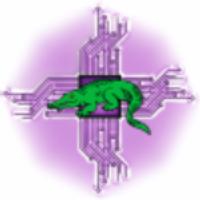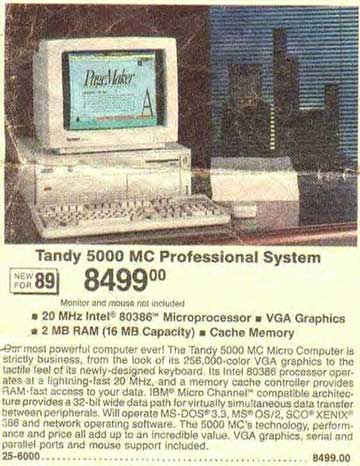
 |
Neon-komputadórComputer Users Manual, Ministry of Foreign Affairs and Cooperation, Democratic Republic of East Timor
|
|
Languages EnglishPortuguese Index Introduction IntroductionAbout the authors, About the Manual GNU Free Documentation License Chapter I: Hardware and Software Chapter II: Networks and Communications Chapter III: Operating Systems Chapter IV: Applications Chapter V: Basic Coding and Programming Chapter VI: Basic Systems Administration Appendicies: Ministry Policy Ministry Hompage |
IntroductionWelcome to the first Computer User's Training and Information Manual for the Ministry of Foreign Affairs and Cooperation for the Democratic Republic of East Timor. This manual has been written following careful consideration of the needs of staff at the Ministry, based on their current levels of knowledge, skills and the equipment and administrative system that they deal with. Furthermore, the Manual has also been written with the future in mind. This is done in two ways. Firstly, by the provision of basic information on how computers actually work (rather than explaining how use an application), thus encouraging interested individuals to further study and research and secondly, by explaining the way that alternative operating systems and applications (eg., Red Hat Linux and OpenOffice) which may in the future prove to become the Government's software of choice - as many other developing nations are doing. The reasons for this will become clear as you read this manual. The manual is divided into seven parts - an introduction to computer hardware and software, an introduction to networks and communications, an introduction to operating systems, an introduction to applications, an advanced introductory chapter on coding and, and introductory chapter systems administration and an appendix of relevant Ministry policy and evaluation forms. Each chapter provides both general knowledge to provide the user an idea of how the each part fits into the whole and specific knowledge, using examples from the very computers on individual's desks, the Ministerial network and the state of computing in East Timor. The objectives of this manual is actually quite high - it seeks not just to tell a user how to use a particular application but also to at least partially understand what is going on. If this objective is achieved then it would not be unfair to say that those who have mastered the material in this manual will have a higher level of computer knowledge than many people in so-called 'advanced' nations. For a country that is starting with 45% illiteracy, this will be quite an achievement! Nonetheless, this manual is not easy reading, and nor is it meant to be. To quote a member of the ITTimor mailing list "A computer is not a fridge". Computers are very complex machines and any attempt to describe them 'simply' is always inadequate. As such, this is a fairly dense document and it does include more than its fair share of technical information. There has been an imperative to write it "efficiently" as this will make it more useful over time. There is a balance between raising the level of conceptual knowledge - often ignored by other trainers - and providing solutions to common questions and problems. Don't expect to absorb and understand everything written here straight away. This manual is designed so that the reader will refer to it over a number of years and thus, over time, increase both their general and particular computer knowledge. On the other side of the coin, this is not the sort of manual that makes a person a technician or systems administrator. Such specialist and advanced tasks require a person to at least competent with everything in this manual and much more besides. This manual provides a person with the necessary knowledge to be an advanced and very competent computer user. However, it is no replacement for the dozens of texts that have to be absorbed for advanced technical repairs, programming and genuine system administration knowledge. Hopefully however, for some readers, it will provide a sufficient interest for pursuits in that direction. This manual is written in the recognition that it is not possible to confront a future, modern society, without knowledge of computer and communications technology. If the computer and communications revolution has been spectacular enough over the last thirty years then rest assured in the next thirty years the changes will be greater still. The wordwide transformation to the way that communication, calculation and information processing is conducted is as significant as the transformation from the hand-written scripts of the traditional societies to the invention of the movable type printing press. The fact that technology led to an explosion in scientific research, the industrial revolution, the separation of church and state, and the establishment of modern democracy is simply illustrative of the power of information and communications technology. As much as this manual has been written with the future in mind it is a temporary document with a maximum use-by date of the end of 2008, by which time, it is very unlikely that the Ministry of Foreign Affairs and Cooperation will still be using Windows98 as the primary user operating system. This is not because the computing or educational theory that drives the document will become dated. Indeed, the basic knowledge within should remain relevant for at least a decade. Rather the particular examples used will change and because of unforeseen decisions of future East Timorese administrations. Personal computer technology has come a long way since the January 1975 edition of Popular Electronics, where a company called MITS offered a kit that included an Intel8080 CPU chip, a power supply, a front panel of lights and 256 bytes of memory (what all these numbers mean will become clear soon enough). Selling for $395USD, you actually had to finish the circuit boards yourself with a soldering iron. It had no keyboard, it had no mouse, no printer and not even a monitor. It is difficult to tell in advance what sort of national network infrastructure this country will have, what sort of computers will be available to people and what sort of operating systems and applications will be used. One thing for sure however - it will be very different to what you have in 2003! Moore's Law In 1965, whilst preparing a speech about the growth of computer memory, George Moore noticed that each new chip contained roughly twice as much capacity as the previous one and each chip was released every 18-24 months. To this day, the observation remains remarkably accurate. A computer purchased in two years time will be twice as fast and store twice as much as one purchased today. The lesson learnt for a relatively impoverished country like East Timor is not to buy the most up-to-date machines, but rather to make intelligent resource decisions about the one's you already have.  |
Ministry of Foreign Affairs and Cooperation, GPA Building #1, Ground Floor, Dili, East Timor
Website code and design by Lev Lafayette. Last update August 20, 2003